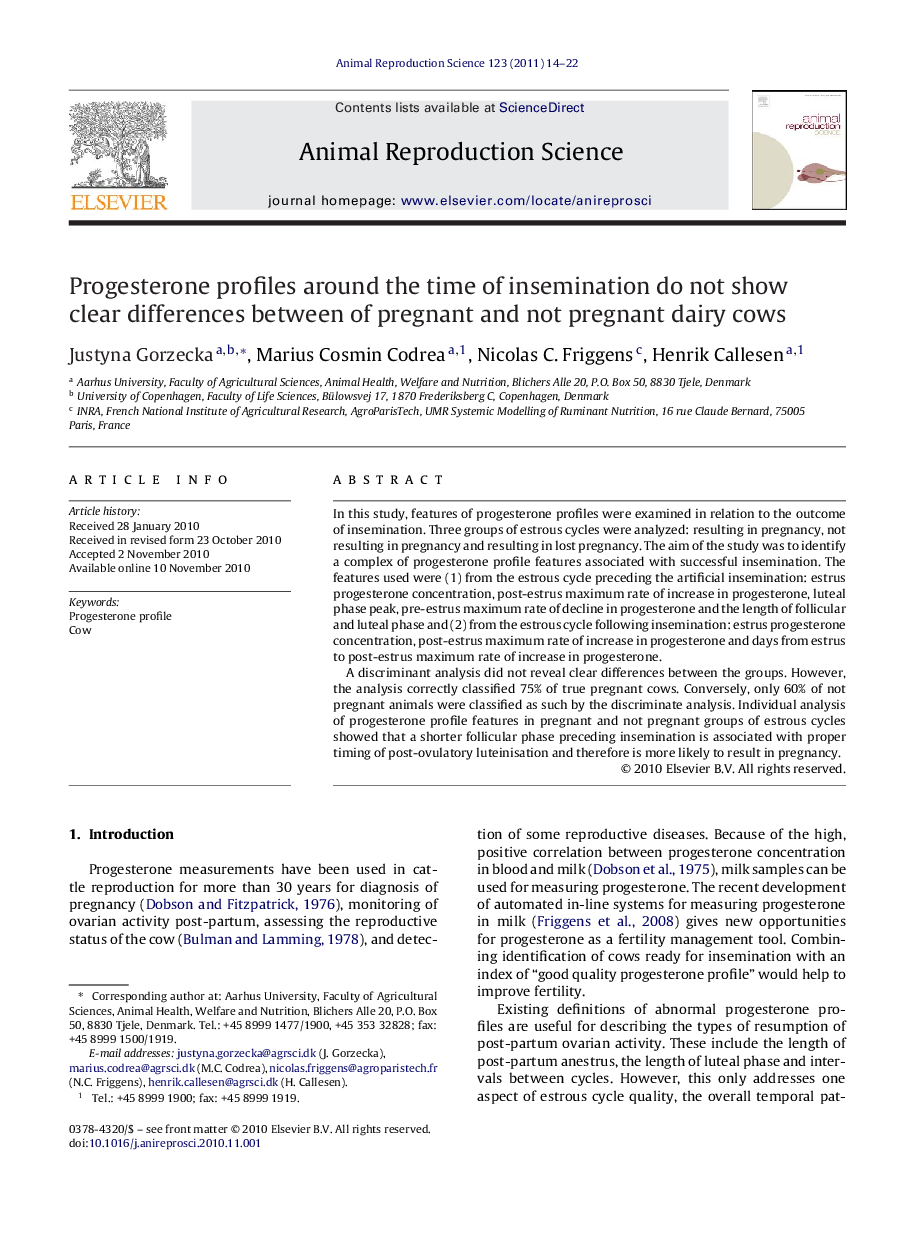| Article ID | Journal | Published Year | Pages | File Type |
|---|---|---|---|---|
| 2073500 | Animal Reproduction Science | 2011 | 9 Pages |
In this study, features of progesterone profiles were examined in relation to the outcome of insemination. Three groups of estrous cycles were analyzed: resulting in pregnancy, not resulting in pregnancy and resulting in lost pregnancy. The aim of the study was to identify a complex of progesterone profile features associated with successful insemination. The features used were (1) from the estrous cycle preceding the artificial insemination: estrus progesterone concentration, post-estrus maximum rate of increase in progesterone, luteal phase peak, pre-estrus maximum rate of decline in progesterone and the length of follicular and luteal phase and (2) from the estrous cycle following insemination: estrus progesterone concentration, post-estrus maximum rate of increase in progesterone and days from estrus to post-estrus maximum rate of increase in progesterone.A discriminant analysis did not reveal clear differences between the groups. However, the analysis correctly classified 75% of true pregnant cows. Conversely, only 60% of not pregnant animals were classified as such by the discriminate analysis. Individual analysis of progesterone profile features in pregnant and not pregnant groups of estrous cycles showed that a shorter follicular phase preceding insemination is associated with proper timing of post-ovulatory luteinisation and therefore is more likely to result in pregnancy.
